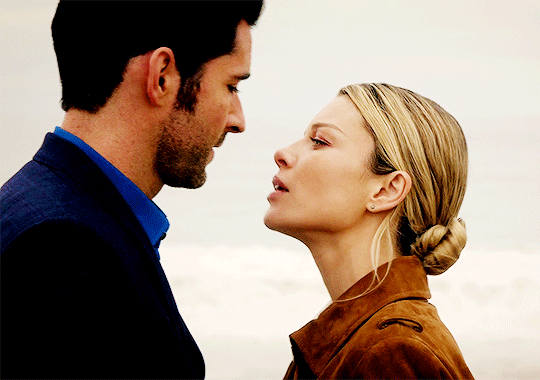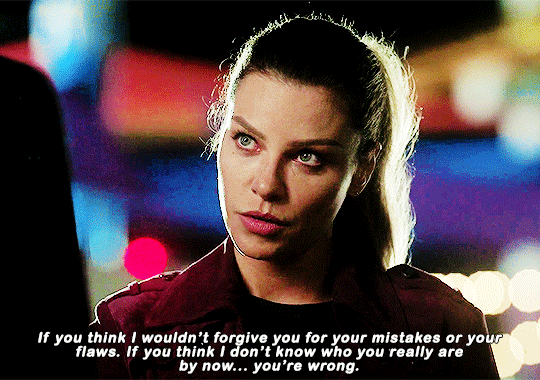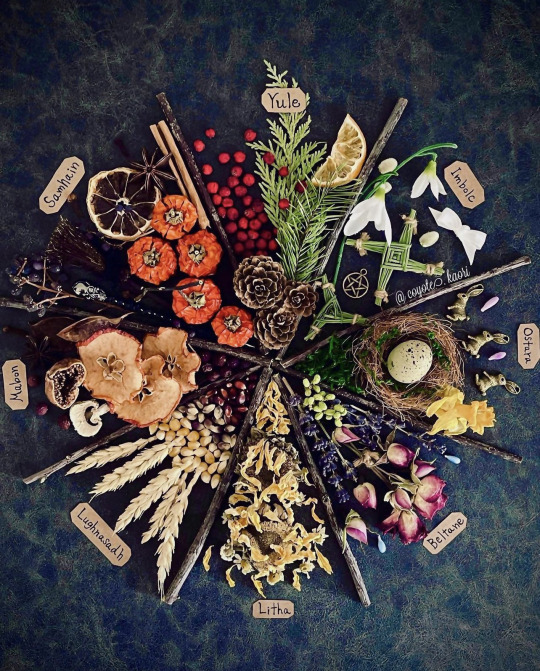Text





Everyone, meet Peaches! She's an anniversary gift from my hubby, and I just adore her. She is a Phidippus Regius, commonly called the Regal jumping spider! She is already very curious, and I am working on earning her trust. I believe her to be in her final adult stage, however I am not super confident in identifying what instar older spiders are in. Either way I love her so much!
2K notes
·
View notes
Text










235 FAVORITE SHIPS OF ALL TIME (ranked by my followers) 16. lucifer morningstar and chloe decker - lucifer
965 notes
·
View notes
Text
2025 Witches' Calendar

January 13 ● Full Moon in Cancer (Wolf Moon) January 29 ● New Moon in Aquarius February 2 ● Imbolc February 12 ● Full Moon in Leo (Snow Moon) February 27 ● New Moon in Pisces March 14 ● Full Moon in Virgo (Worm Moon) March 15-April 7 ● Mercury Retrograde March 20 ● Ostara March 29 ● New Moon in Aries April 12 ● Full Moon in Libra (Pink Moon) April 27 ● New Moon in Taurus May 1 ● Beltane May 12 ● Full Moon in Scorpio (Flower Moon) May 26 ● New Moon in Gemini June 11 ● Full Moon in Sagittarius (Strawberry Moon) June 20 ● Litha June 25 ● New Moon in Cancer July 10 ● Full Moon in Capricorn (Buck Moon) July 18-August 11 ● Mercury Retrograde July 24 ● New Moon in Leo August 1 ● Lammas August 9 ● Full Moon in Aquarius (Corn Moon) August 23 ● New Moon in Leo September 7 ● Full Moon in Pisces (Harvest Moon) September 21 ● New Moon in Virgo September 22 ● Mabon October 6 ● Full Moon in Aries (Hunter's Moon) October 21 ● New Moon in Libra October 31 ● Samhain November 5 ● Full Moon in Taurus (Beaver Moon) November 9-November 29 ● Mercury in Retrograde November 20 ● New Moon in Scorpio December 4 ● Full Moon in Gemini (Cold Moon) December 19 ● New Moon in Sagittarius December 21 ● Yule
10K notes
·
View notes
Text
To the Gods you are not sinful, guilty or unclean. You are you, unique in every facet of your existence.
The Gods hold grace for you. Existence is not immoral.
2K notes
·
View notes
Text
If you’re ever having a breakdown, just remember the wise words of the lord himself

6K notes
·
View notes
Text

Bright Apollo, King of Gold Arrow, Lord of Silver Bow.
Bring Health and Happiness to your followers in the new year.
And plague my enemies with cold so that they sneeze on every inappropriate occasion🙂
2K notes
·
View notes
Text

II The High Priestess - Moth Flight
The High Priestess's location between two pillars of light and dark suggests that it is her responsibility to serve as a mediator between the depths of the reality. She is the third pillar - the path between. She believes that both pillars are equal and there is knowledge to be learned in both the material and spiritual world.
62 notes
·
View notes
Text


AGENT CARTER 1.08 - Valediction WANDAVISION 1.09 - The Series Finale
1K notes
·
View notes
Text


Hercules (1997) dir. John Musker & Ron Clements
2K notes
·
View notes
Text


THE WIZARD OF OZ 1939 | dir. Victor Fleming
6K notes
·
View notes
Text








0. The Fool (I am going.²)
Astrology: Uranus
"The bright originality of Uranus infuses the card with a fierce independence spirit. Everything is possible."⁴
Archetypal Understanding: Child
"The Fool is the archetype of the child."⁶
The Fool means starting a journey.
Each step brings you closer to your destiny.⁶
"We are the ones we've been waiting for."⁹
Keywords: innocence, beginnings, trust, hope, opportunity, faith, fear of failure, holding back, taking a chance without a full plan, seeing endless potential, risk
Affirmations⁵
I AM spontaneous.
I CAN take risks.
I WILL embrace new beginnings.
"I embrace the unknown because I learn more about myself each time I leap."⁷
The Fool has no knowledge or experience.⁸
You're at the beginning of a journey, a thrilling new experience into some aspect of adulting. In some area of life, you are a beginner.
The fool says the time is now. They believe that the worst possible thing is to live in gray, afraid to try because you might not succeed. They believe that the reward of glorious technicolor is worth the risk.
The Fool acts in her own best interest. The Fool is a whole and complete agent of herself. She operates outside societal norms. She is not affected by the opinions, judgments, or advice of others. She is blissfully unaware of irrelevant prying eyes and speculation. Her wholeness is sublime. Each step unravels her perfection.⁶
This card reminds us that hope isn't foolish at all.³
Imagine you saw the world again for the first time. This is a beginner's mindset, and it lets you see a vast array of possibilities without the limitations and rigidity of an experienced expert. You are guaranteed to make some mistakes at this point, but they are not setbacks; they're just lessons on how to take the next step more clearly. ¹
Historically, the fool is the only person the king will listen to. The gesture is a beloved character. The fool has no agenda, no hidden plans or shenanigans up his sleeve. He is guileless. He is honest. He is generally happy. He's going to move forward, to say what's on his mind. He's going to be honest and forthright regardless of circumstance. ²
"The creation of something new is not accomplished by the intellect but by the play instinct acting from inner necessity. The creative mind plays with the objects it loves." - Carl Jung
The beginning is the end, the end is a beginning. The fool is given number zero. Zero connects to the world card usually portrayed inside an oval shaped wreath. Describing the fool on the beginning of his journey Arthur wait says that "He will return to the sun behind him by another path after many days."
If you pull the fool during a daily draw, it likely means there is big new beginnings racing towards you (or perhaps already upon you)!⁵
Some questions to ask when you see this card; are you ready to take a leap? Are you hesitating on the premises of something new? What are you hoping for? What are you afraid of? Isn't it better to try than to hold yourself back? ³
The fool's experiences ever-changing and evolving, just like yours.
¹The Millennial Tarot by Scott Bergman, ²Kitchen Table Tarot by Melissa Cynova, ³Wild Card by Jen Cownie, ⁴The Magic of Tarot by Sasha Graham. ⁵Your Tarot Toolkit by Ru-Story, ⁶The Dark Woods by Sasha Graham, ⁷The Inner Tarot by Kare Van Horn ⁸Tarot Life Lessons, ⁹Tarot for the Hard Work
1 note
·
View note
Text



Reddit’s even kicking that dead ceos ass
53K notes
·
View notes
Text

Just a note, this is my favorite part of the book “Hearth & Home Witchcraft” by Jennie Blonde. This quote is totally the sort of statement I’ve been waiting for a witch to make.
20 notes
·
View notes






